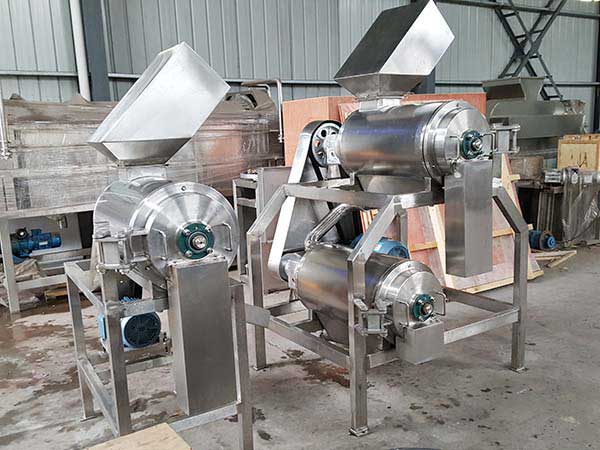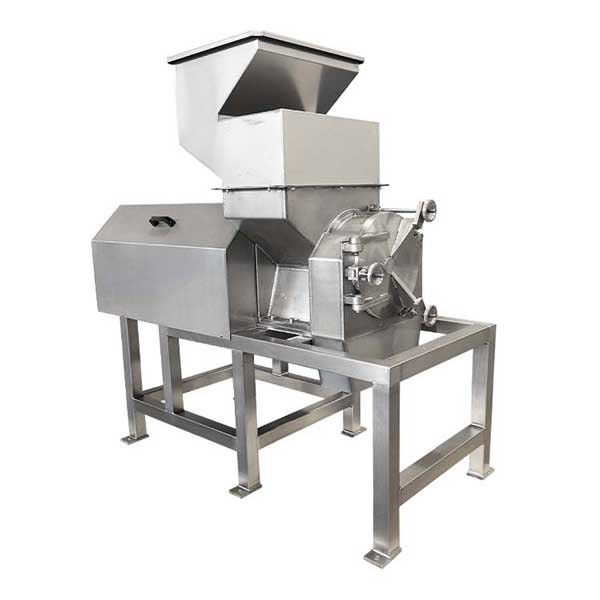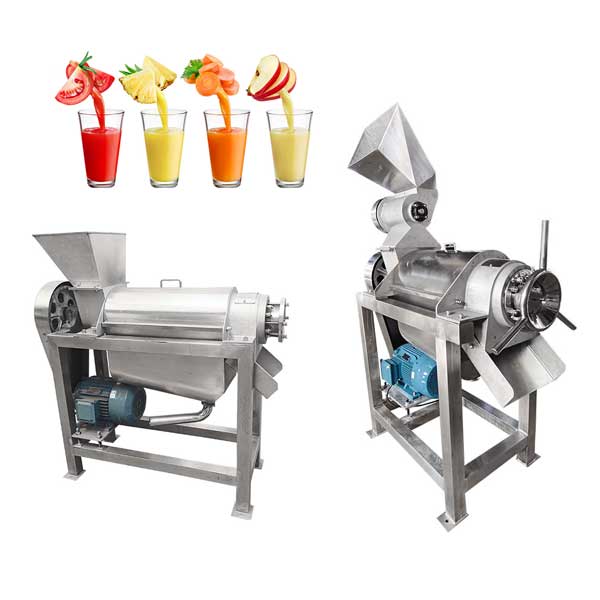Description
Our industrial mango pulper machine is designed to make mango pulp extraction faster, cleaner, and more efficient. It doesn’t require separate peeling and core-removing equipment; this machine handles the entire separation process automatically — pulp, peel, and core are separated in one step. It greatly simplifies your production line while reducing equipment investment, labor, and maintenance costs. Versatile and reliable, it can also process a wide range of fruits such as tomato, peach, apricot, berries, apple, and pear, delivering smooth, high-quality pulp for juice, puree, and jam production.
Mango Pulper Machine
Fuxun Machinery offers two models of mango pulper machines for sale, capable of processing 1-3 tons of mangos at 80% ripeness per hour. For other fruits, the processing capacity can reach up to 5 tons per hour. Below are more parameters for your reference.

| Model | Power | Capacity | Pulping Speed | Machine Size (mm) |
|---|---|---|---|---|
| MDJ2-4 | 7.5 kW | 1-1.8 t/h | ≤ 860 r/min | 1,370 × 1,370 × 1,800 |
| MDJ2-5 | 15 kW | 2-3 t/h | ≤ 860 r/min | 1,650 × 1,370 × 2,000 |
Applications:
1. Stone Fruits: mango, peach, apricot, plum
2. Berries: strawberry, kiwi, raspberry, tomato
3. Pome Fruits: Apple (after pre-cooking), pear (after pre-cooking), dates
Features of Mango Pulping Machine
1. Automatic Separation of Pulp, Peel, and Core
Our mango pulper machine adopts a two-stage pulping structure. In the first stage, it effectively breaks the mango and separates the pit. In the second stage, a scraper rotor gently scrapes and refines the pulp, separating it from peel and fibers. So you don’t need to buy another peeling and core-removing machine or peel and remove the core manually.
2. Dual-Stage Processing for Higher Yield and Finer Texture
Compared with single-stage pulpers, the dual-stage design improves pulp extraction efficiency by 10–15%. The first stage performs coarse pulping and de-coring. The second stage refines the pulp, ensuring that remaining fruit flesh attached to the peel or core is fully utilized. This two-step separation ensures maximum pulp recovery and a smooth, uniform puree, reducing raw material waste and optimizing cost efficiency for factories.
3. Adjustable Screen and Scraper Design
By changing the screen size or adjusting the scraper angle, operators can control the pulping fineness and processing speed. This flexibility allows the machine to handle different fruit varieties and textures while maintaining optimal pulp quality.
4. Customizable to Your Production Needs
Whether you need a stand-alone pulper or a complete mango pulp processing line, we offer customized solutions to match your plant layout, capacity, and automation level.


Structure & Working Principle
The machine is composed of a drive system, bearing seat, shaft sleeve, rear cover, pulp baffle, cylinder body, spline shaft, sieve screen, scraper or de-coring rod, front cover, and frame. Let’s review the working process step by step.
1. Feeding and Initial Pulping: The motor drives the rotor via a belt transmission, causing it to rotate at high speed. Fruit is fed into the machine through the inlet, where the feeding blades move the material spirally toward the de-coring rod. Here, the fruit is crushed, and the core is separated.
2. Separation of Pulp: Due to centrifugal force, the juice and pulp pass through the screen holes into the next stage, while the cores are discharged through the residue outlet, achieving automatic separation of pulp and residue.
3. Pulp Refining: When the pulp enters the second-stage cylinder, a pulp baffle distributes the material evenly between the scraper blades and the screen. As the scraper rotates and moves along the cylinder at a set lead angle, the pulp travels in a helical path. During this movement, centrifugal force and scraping action further separate the juice and pulp from remaining peel and seeds, which are discharged through the residue chute.
4. Discharge: The combined action of rotor rotation, centrifugal force, and scraper movement ensures that the machine continuously produces smooth pulp with minimal fiber or residue, while peel, seeds, and cores are automatically separated.
FAQ About Mango Pulper Machine
Our mango pulp machine is suitable for mango, tomato, peach, apricot, berries, kiwi, apple, pear, and more. You can talk with our expert team, and we will recommend suitable equipment to you.
No, you needn’t. Our mango pulp machine can automatically separate pulp, peel, and core.
The pulp can reach 90% depending on fruit ripeness and preparation.
Yes. The machine automatically separates pulp from peel and seed during processing. No manual peeling or coring is required.
Yes, we do. Our fruit and vegetable processing equipment includes:
- Fruit washing machine
- Fruit sorting conveyor or lifter
- Fruit crusher or destoner
- Juicing or pulping equipment
- Mixing, heating, and pasteurization units
- Filling and packing systems
Standard models operate on a three-phase 380V, 50Hz power supply, while custom voltage options are available.





